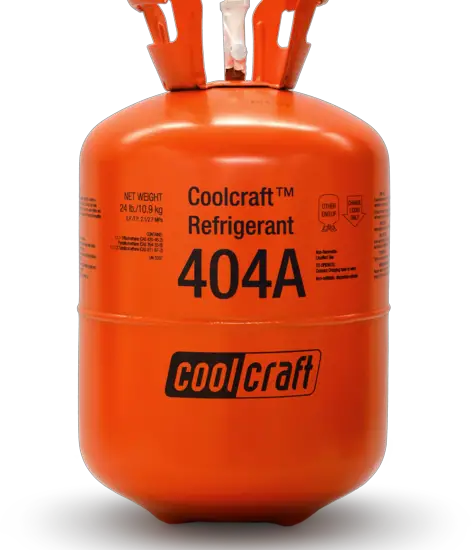ODP and GWP of refrigerants – sound like alphabet soup, don’t they? They’re actually super important metrics when you’re looking at refrigerants and their impact on our dear Earth. In this chat, we’ll get you up to speed on these nifty acronyms and how they relate to the stuff that keeps your ice cream cold. Ready? Let’s jump!

Table of Contents
Introduction to Ozone Depletion Potential (ODP) and Global Warming Potential (GWP)
Defining ODP and GWP
So, what’s ODP? It stands for Ozone Depletion Potential and it’s a measure of how much a refrigerant can harm the ozone layer. GWP, on the other hand, stands for Global Warming Potential and it measures how much heat a gas can trap in the atmosphere compared to carbon dioxide.
Calculating ODP and GWP
Okay, so how do we get these numbers? It’s a bit like baking – you need the right ingredients and the right process. For ODP, scientists compare the potential of a refrigerant to deplete the ozone layer to that of a reference substance, usually CFC-11. GWP, meanwhile, is calculated by comparing the amount of heat trapped by a gas to the amount trapped by CO2 over a certain period, typically 100 years. You’re with me so far, right?
ODP and GWP: Why They Matter
Environmental Impact of Refrigerants
Ever think about how the cool air coming from your refrigerator can heat up the planet? Sounds like a sci-fi plot, doesn’t it? But that’s the reality when we talk about the environmental impact of refrigerants. A refrigerant with high ODP or GWP values can do a number on our environment, leading to ozone layer depletion and global warming. And let me tell you, nobody wants to live in a world where ice cream melts before you can eat it.
Regulatory Implications
Ever hear about the Montreal Protocol or the Kyoto Protocol? They’re big international agreements aimed at saving our planet. These guys use ODP and GWP values to regulate the use of certain refrigerants. You might wonder why certain refrigerants are phased out – well, you can blame (or thank!) their high ODP or GWP values for that.
For more articles on refrigerants, click here: Articles on Refrigerants: The Ultimate Guide to Understanding Them
Analysis of Common Refrigerants
Chlorofluorocarbons (CFCs)
Remember when I mentioned CFC-11? That’s a type of Chlorofluorocarbon (CFC). These guys were once the kings of refrigerants but they’ve been dethroned because of their high ODP and GWP. Talk about a fall from grace!
Examples of CFCs
Take R-12, for example. This CFC was once a popular refrigerant but its high ODP and GWP have led to it being phased out. It’s like that band you loved in high school but can’t stand now.
Hydrochlorofluorocarbons (HCFCs)
Next up on our refrigerant parade are the Hydrochlorofluorocarbons (HCFCs). These guys were meant to be a better alternative to CFCs with lower ODP values, but their GWP values are still a cause for concern. It’s like swapping a chocolate addiction for a candy one – you’re still rotting your teeth!
Examples of HCFCs
R-22 is a prime example of an HCFC. It has a lower ODP than CFCs but its GWP is still high, leading to its phase-out. Remember, it’s not just about being better, it’s about being the best for our planet.
Hydrofluorocarbons (HFCs)
Then there are the Hydrofluorocarbons (HFCs). They have zero ODP which is great, but their GWP? Through the roof. It’s like swapping your car for a bike to save on gas, but then realizing you’re spending a fortune on bike repairs.
Examples of HFCs
R-134a and R-410a are popular HFCs. No ODP, which is cool, but their GWP values are a problem. It’s a step in the right direction, but we’re not there yet.
Natural Refrigerants and Alternatives
Finally, we have the naturals and the newbies – natural refrigerants and alternatives. They’re the underdogs in this race, with low ODP and GWP values.
Examples of Natural Refrigerants and Alternatives
Ammonia, CO2, R-32, and HFOs are making waves as promising alternatives. They have low ODP and GWP values, making them the equivalent of the new band everyone’s talking about.
Choosing Low-ODP and Low-GWP Refrigerants
Factors to Consider
So, how do we choose the right refrigerant? It’s not just about ODP and GWP. You’ve got to think about efficiency, safety, and cost. It’s like buying a car – you don’t just look at the mileage, do you?
Potential Candidates
Some refrigerants are starting to stand out as potential candidates for low-ODP and low-GWP options. It’s still early days, but they’re like the promising rookies in a sports team. Keep your eyes on them!
Conclusion
So there you have it – a crash course on ODP and GWP of refrigerants. By now, you’re probably a mini-expert on the topic! It’s not just about keeping your ice cream cold, it’s about keeping our planet cool too. And that, my friend, is a cause worth caring about.